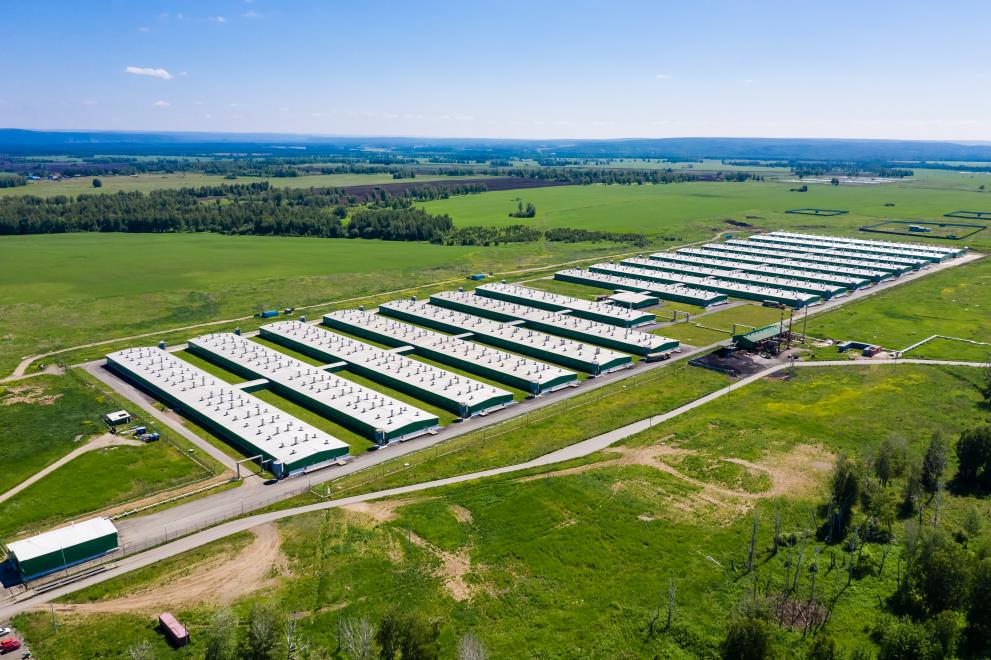
Biomass (organic material from plants or animals) is consumed in varying amounts and patterns within and across countries – mostly for food, materials and energy. This consumption depends on factors such as infrastructure and per capita income – factors that are connected to the globalisation and urbanisation of recent decades. Biomass supply chains are complex and global, with areas of consumption typically situated far from those of production. Biomass consumption is more concentrated in urban centres, where land is scarce. This has given rise to ‘urban biomass sprawl’, where urban land use does not end at a city’s boundaries: the biomass used for urban food, materials and energy mainly comes from agricultural and forest areas outside of the city.
While this land use sustains human society, it is a major driver of global environmental change. Where biomass is produced, it should be done so sustainably and effectively, in order to help lower emissions, diversify Europe’s energy supply, reduce pollution and protect European ecosystems. Energy sourced from biomass must fulfil the sustainability criteria laid out in the EU’s Renewable Energy Directive, in order to be counted against renewable energy targets and receive public financial support. In addition, the EU’s Land Use, Land Use Change and Forestry (LULUCF) Regulation, which establishes how the land use sector contributes to the EU’s climate goals, sets out rules and targets relating to carbon removals and emissions from land use (including forests, cropland and wetlands), reflecting the importance of sustainable land management in reaching climate neutrality by 2050 (under the European Green Deal).
To explore the connections between biomass consumption and biodiversity loss, researchers have now quantified the ‘global biodiversity footprint’ (BDF) of a large city in a high-income country: Vienna, Austria. The BDF is defined as the global vertebrate population loss caused by land use necessary for Vienna’s biomass consumption.
In the study year of 2010, Vienna was home to 1.7 million inhabitants, totalling more than one-fifth of Austria’s population and making it the fifth-largest city in the EU. The researchers considered2 a range of factors, including: the biomass consumption of the city’s population; the proportion of biomass coming from primary sources (such as wheat, soybeans, or wood); the size and location of land requirements necessary to produce this primary biomass; and the impact of this production on biodiversity. As well as quantifying the city’s overall biomass consumption, the researchers split different ‘product groups’ to ascertain their relative contributions to Vienna’s BDF.
In order to produce the 3.21 million tonnes of ‘primary biomass equivalent’ dry matter consumed in Vienna in 2010, 14 460 km2 of land was used worldwide (around 35 times the area of Vienna itself). This caused 10 905 impending global vertebrate population losses – 14% of the population losses caused by biomass consumption in Austria. Of Vienna’s BDF, 58% was embodied in food products, 28% in materials, and 13% in energy products. The primary contributions within these categories were from animal-based foodstuffs (meat and dairy, which accounted for 43% of Vienna’s total BDF) and from spices and stimulants (imports from species-rich regions with low yields per unit area, such as coffee). Most of the BDF occurs within Vienna (37%) or Europe (43% – excluding Austria), with around 20% located elsewhere.
While per capita primary biomass demand in Vienna is 25% higher than the global average, the per capita BDF is almost equal to the global one, implying that the average population loss per biomass unit is lower than it is globally. The researchers suggest that this is because of high conversion efficiency (relatively small losses during the conversion of raw to final products) and low initial species richness of the sourcing regions. Indeed, while non-European regions only supply 5.5% of Vienna’s biomass demand, 20% of the city’s BDF occurs there.
The researchers highlight dietary change, specifically lower consumption of animal products, stimulants and spices, as a promising way to reduce Vienna’s BDF. The BDFs of biomass products also vary considerably across different source regions and production systems, with 45% of extracted primary biomass being lost during production processes, most notably through the conversion of plant products to animal products. Other ways to reduce Vienna’s BDF could be to actively consider the source regions and systems producing the biomass, and to reduce conversion losses and waste where possible, all of which are currently being tested in a follow-up study.
As the researchers emphasise, this study is specific to Vienna, but nonetheless, such studies improve our knowledge of urban biomass flows and help us to assess the biodiversity impacts of both products sourced from different regions and different resource and land-use strategies.
Footnotes:
- Consumption-based accounting is used to quantify biomass consumption, to trace resource flows from consumption back to extraction, and biodiversity data is produced using a countryside species-area relationship (cSAR) model at landscape scale. The researchers focus on ‘native species’ – those in the region before changes in land use – and include populations impending a loss (as individuals may persist in habitats even once a population is disrupted).
Source:
Semenchuk, P., Kalt, G., Kaufmann, L., Kastner, T., Matej, S., Bidoglio, G., Erb, K-H., Essl, F., Haberl, H., Dullinger, S., and Krausmann, F. (2023) The global biodiversity footprint of urban consumption: A spatially explicit assessment for the city of Vienna. Science of the Total Environment, 861: 16076. Available from: http://dx.doi.org/10.1016/j.scitotenv.2022.160576 [Accessed July 17 2023].
To cite this article/service:
“Science for Environment Policy”: European Commission DG Environment News Alert Service, edited by the Science Communication Unit, The University of the West of England, Bristol.
Notes on content:
The contents and views included in Science for Environment Policy are based on independent, peer reviewed research and do not necessarily reflect the position of the European Commission. Please note that this article is a summary of only one study. Other studies may come to other conclusions.
Details
- Publication date
- 10 August 2023
- Author
- Directorate-General for Environment

